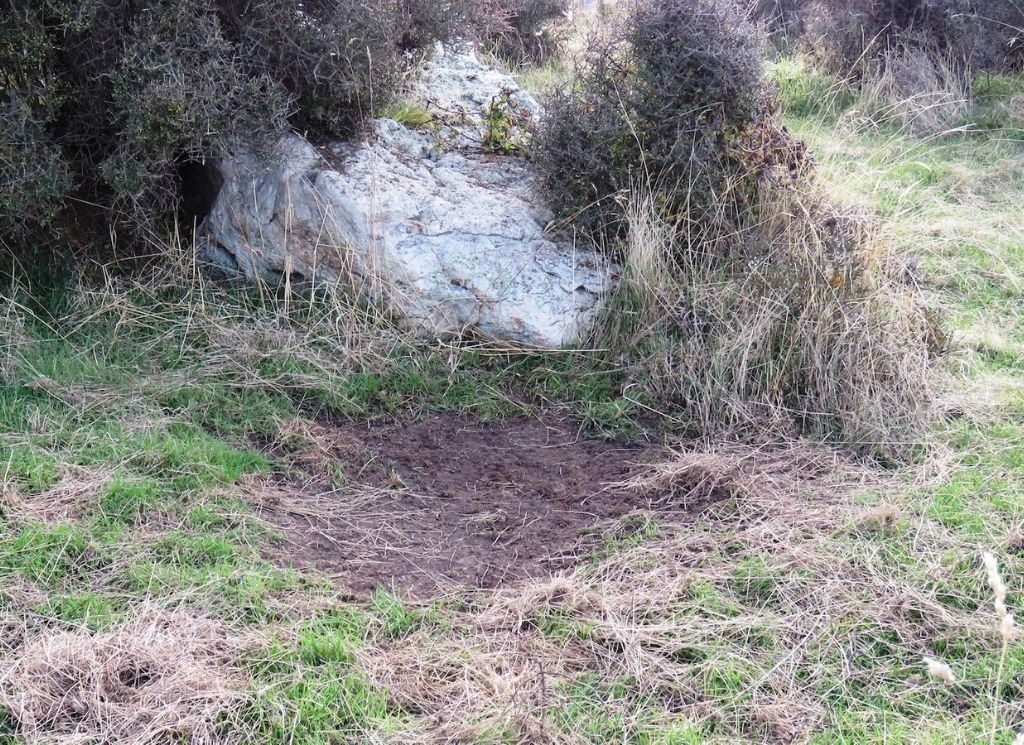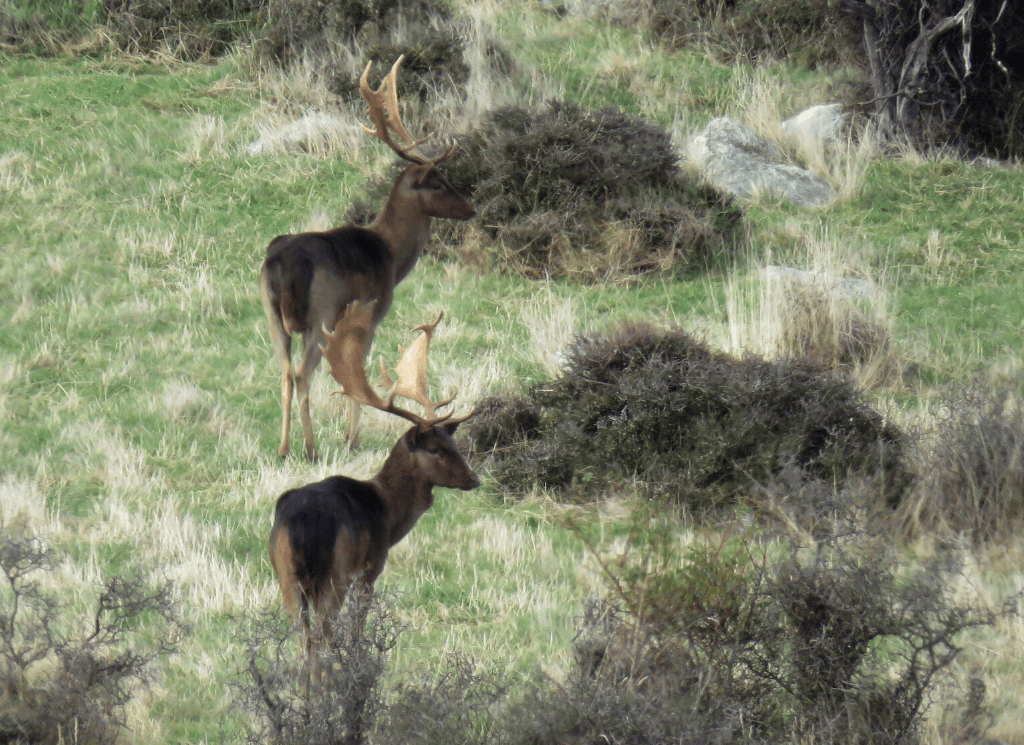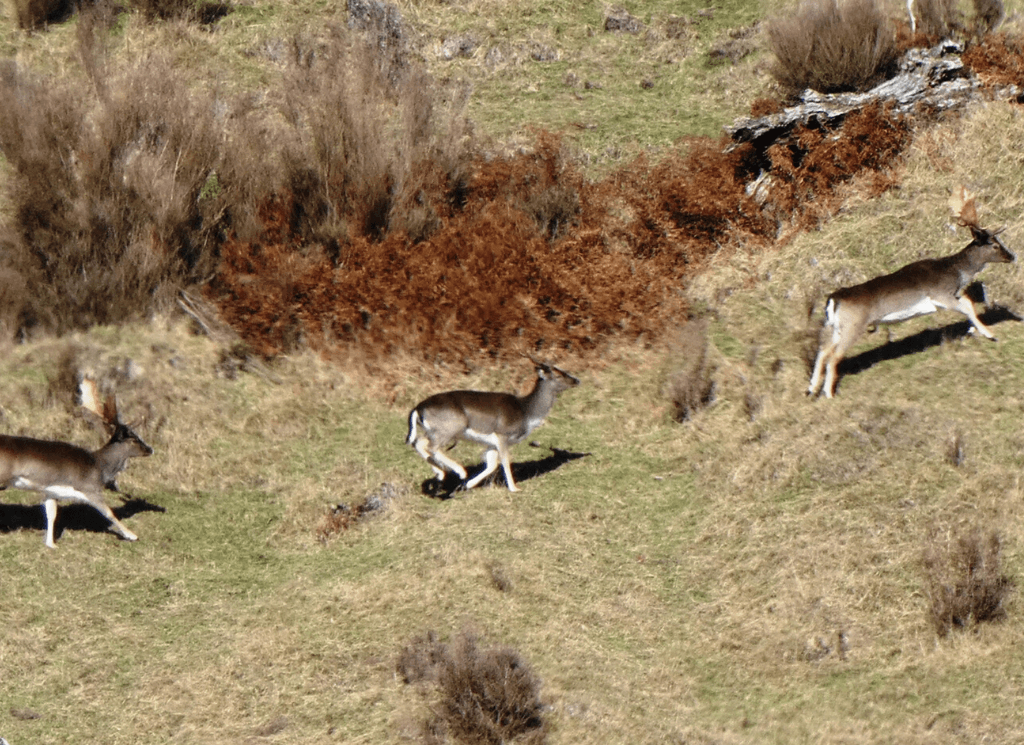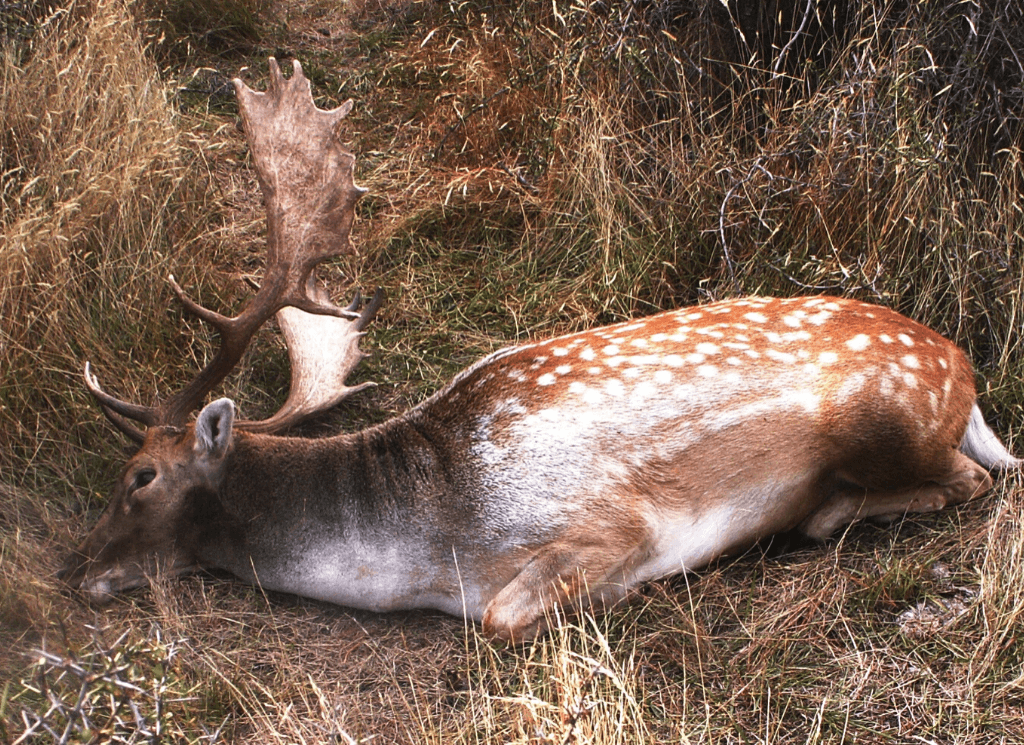


Hunting Experiences
12 March 2020
For much of the year, the real big fallow bucks can appear to have disappeared. Through the rut and post-rut winter, they’re very conspicuous, chasing does at the former time and much-needed feeding in the latter time, but then, poof, gone. Unlike the doe groups who are real homebodies all year, the mature bucks spread out through late winter, spring, and most of the summer. They hide away in thick fringe country carrying out a fairly solitary hermit existence. A sighting is quite rare.

Then in early to mid-fall, they are back, and the evidence supporting this fact sought out by Poronui hunting guides, are buck scrapes. Each clearly defined scratched out, scented hollow indicates a buck is setting up his territory for the rut. His patch might have a series of scrapes that he visits, and a number of small shrubs that he scents and thrashes on his travels. Unlike red stag and sika, who roar or squeal aggressively at rivals, the fallow buck croaks to attract does to his territory. He is encouraging females to come and check out his credentials, and, if they like what they see, to hang around and form his mating group.

Each trophy buck will have his own territory. He owns his patch, and in the next valley, another trophy buck has his own harem. Wandering around the edges of territories are the wannabes, who may viciously fight each other but generally avoid the big fellows. At peak rut, a big buck may ‘burp’ in one-minute bursts, each burst occurring after just a five-minute rest. It’s arguably true that the deeper and louder the croak, the larger the buck.
Peak rut time is generally around mid-April, and, depending on the weather and doe numbers, may last two or three weeks. It’s an exciting time.

Hearing a trophy buck and harvesting a trophy buck are two different things. He is very vulnerable, but, if in open country, he is surrounded by does that are on the alert and paradise ducks who love to squawk out warnings. In thicker bush he is invariably on the move constantly, so stalking him will see you bust his girls, who are bedded around his location. Satellite bucks are also wandering the fringes. Ambushing a buck territory is the best hunting technique, though opportunistic spot-and-stalk hunts have also proved productive.

Success will be determined by the experience of your guide. Popular scrape sites are usually forever sites; the bucks may change but the location doesn’t. Such sites are called leks. Your guide will know where the historic leks are, the terrain, where best to stalk from when different winds blow, and where the best viewing and shooting lookouts are. Pre-scouting will mean you are stalking a previously sighted trophy, not a maybe trophy. Hunting opportunities are virtually guaranteed, the rest is up to your marksmanship.
Want to ask a question about Poronui, personalise your vacation with bespoke itinerary options or find out about available dates?
Simply fill in your name and contact email address with a short message and we will get back to you.